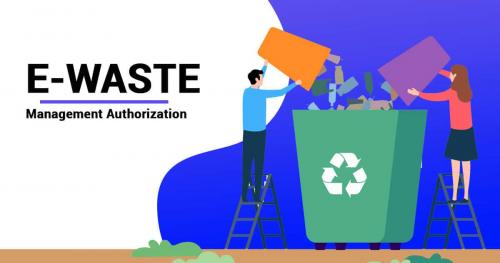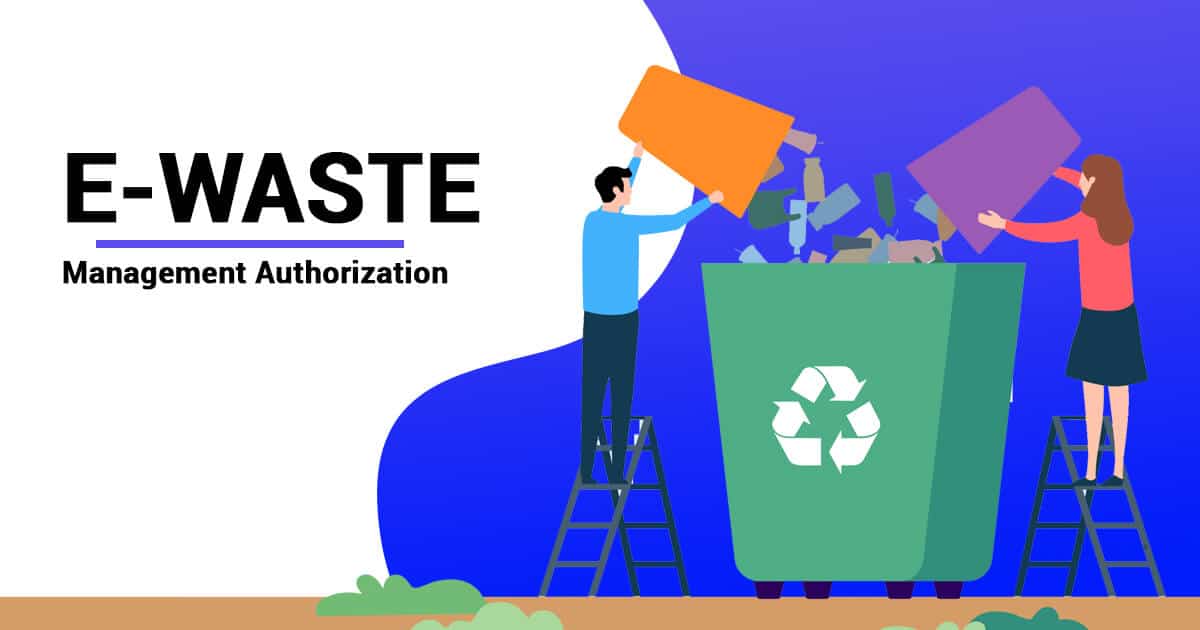E-Waste management: Where to start?

To answer cost and profitability issues first and foremost, but also in an ECO-responsible approach, the majority of companies have long opted for controlled and optimized management of their waste. Need to improve the management in place? to rethink it? to imagine it? Here’s what to base it on.
Beyond the interests they seek to derive from it, companies also manage their waste to meet obligations or constraints which come from regulatory texts (laws, prefectural orders, etc.) or certifications (ISO, MASE, etc.). They must juggle between these constraints and requirements and the life of the company which influences the nature and quantity of their waste. A fluctuating volume of activity, the addition or deletion of supplies, the addition, deletion or modification of production…. are therefore all reasons for companies to remain vigilant and to be forward-looking regarding the waste management .
As a reminder, “E-Waste Management Authorization” generally represents any activity participating in the organization of the handling of waste from its production to its final treatment. The main objective is to reduce waste and at the same time its effects on the environment. Among the different types of waste, we find hazardous waste, non-hazardous waste, inert waste, waste from economic activities and Bio waste

Corporate responsibility: What does it imply?
The company is responsible for the waste it produces or holds until their recovery or final. Please note, this responsibility is shared between all successive holders of the waste. In other words, when your service provider is required to transport your waste in order to eliminate or recycle it, it is also responsible for this waste (“No, you are not alone!”).
I produce waste, yes but which ones?
First of all, the company must establish a non-exhaustive list of the waste it produces on a daily or occasional basis. For this, no magic recipe, it is better to appoint referents distributed in each business activity / department of the company. They will be responsible for reassembling the list of waste produced, knowing that their membership of the pole or service must guarantee a faithful and precise inventory.
Once this list has been drawn up, the company can try to group the waste into large families: clean or soiled, recyclable or not, paper, cardboard, wood, metal, plastic … All this work will serve as a basis for considering the best solutions with service providers who will be in charge of E-Waste Management, especially when drafting specifications.
Contract your E-waste management with a service provider
Your waste providers are the ablest to provide you with information on this subject. Your goal is to buy as much waste as possible to compensate for the rental of the collection bins they will impose on you as well as the costs of removal. The costs of treating contaminated and / or non-recoverable waste are also offset. For example, seek to obtain a systematically free provision of recoverable waste bins.
It is therefore preferable to involve them in defining the storage locations and conditions. They are, for example, the most capable of preventing possible maneuvering problems, which could ultimately encourage them to charge you additional costs. Above all, they will be able to recommend the storage conditions to best preserve the quality of your waste for redemption and more generally limit the additional costs. For example, taking charge of non-recycled waterlogged waste will necessarily cost you more since invoicing refers to the weight of waste in the bucket.
The volume of collection bins and the frequency of removal must also be seen with them according to the volumes that you estimate to produce at first, technical constraints … Remember to be vigilant and make a point after a few months to readjust service if necessary.
The company has the obligation to issue a BSD or Waste Monitoring Form when it produces hazardous waste.

These BSDs guarantee the traceability and proper treatment of waste. They must be kept for at least 5 years. In practice, your provider will provide it to you. Remember to claim it!
Then, all companies must have and keep up to date a waste tracking register to keep for at least 3 years. As part of the ISO 14001 certification audit, you are likely to be asked to show these documents.
Think prevention!
Raising awareness among your staff via displays, training, talks… will gradually change their daily internal habits. The goal is to get their involvement and rigor in the collection and sorting of waste.
The better the waste is collected and properly stored (plastics and compacted cartons, closed buckets …) and the better they are sorted, the more their value increases for recoverable waste and the more their treatment costs decrease for others. Sensitizing your employees to these issues and to the benefits for the company and obtaining their adhesion is therefore essential. For newly installed management, remember to rely on regular audits to see changes and compare them to your processing costs.
In addition to winning over costs and profitability, companies have to gain from the image they give to their customers. Indeed, optimized and well thought out waste management shows the company’s commitment to the environment and sustainable development. By following all these tips, you will have all the keys in hand to become, if you wish, an “Eco-responsible” company.
Post Your Ad Here
Comments